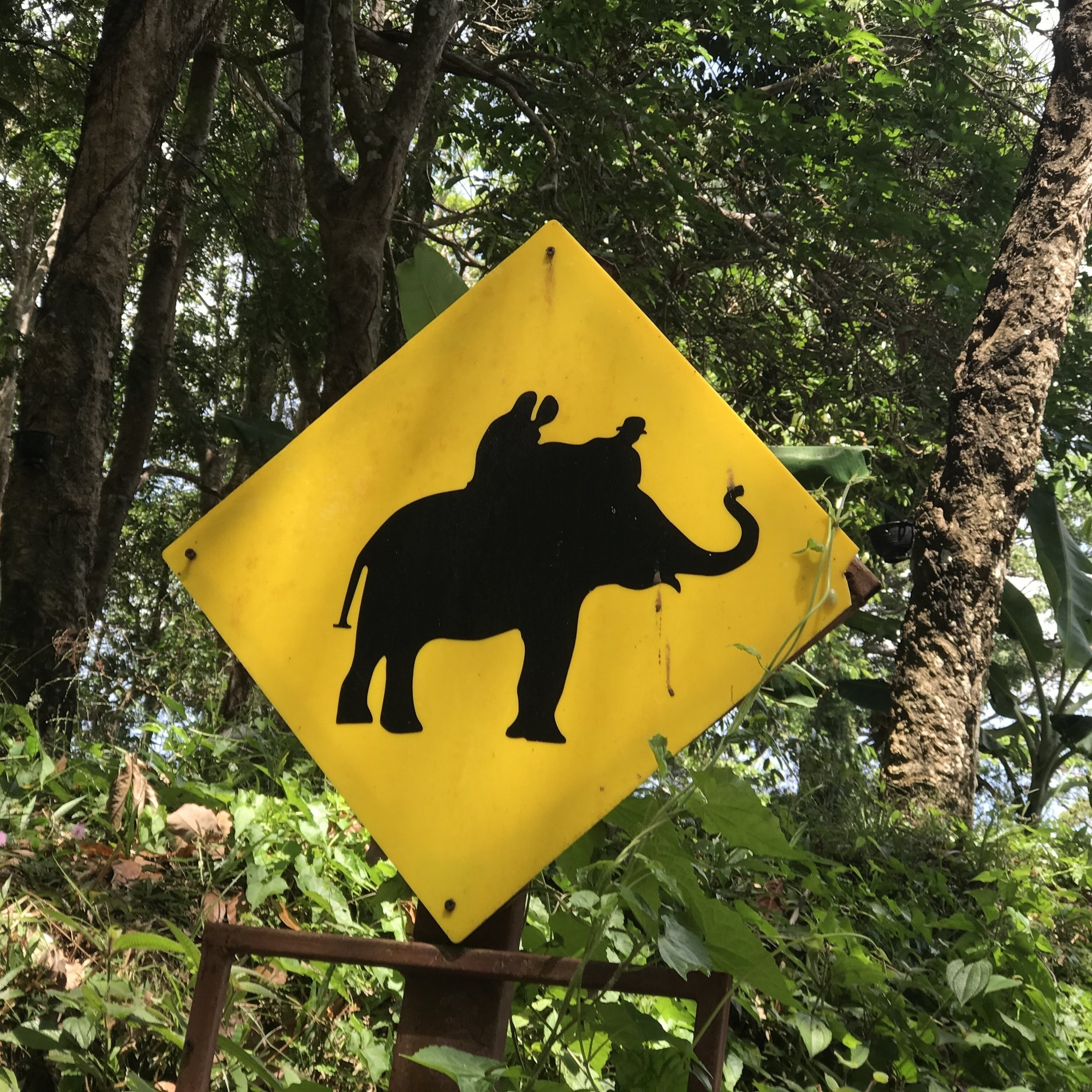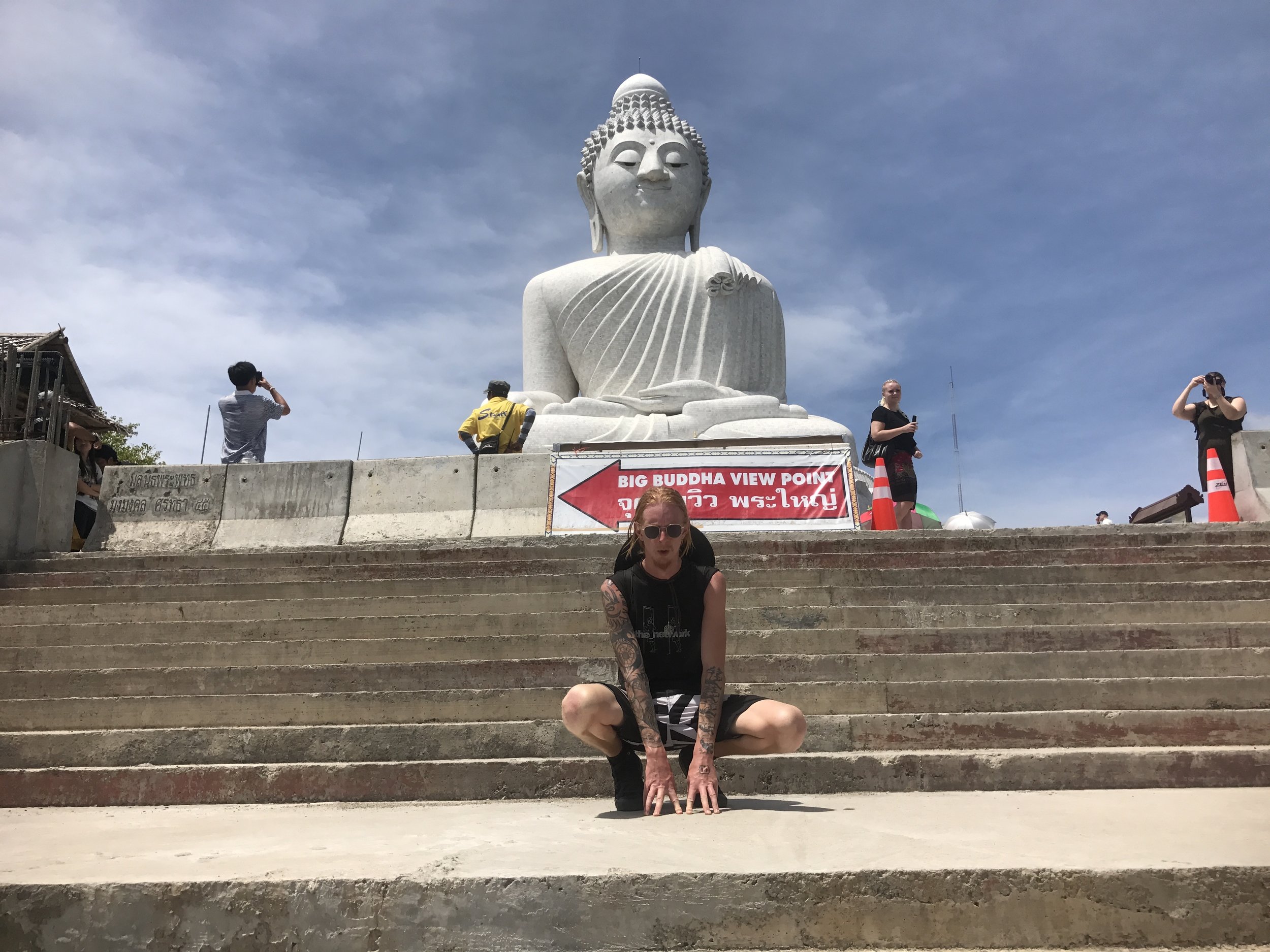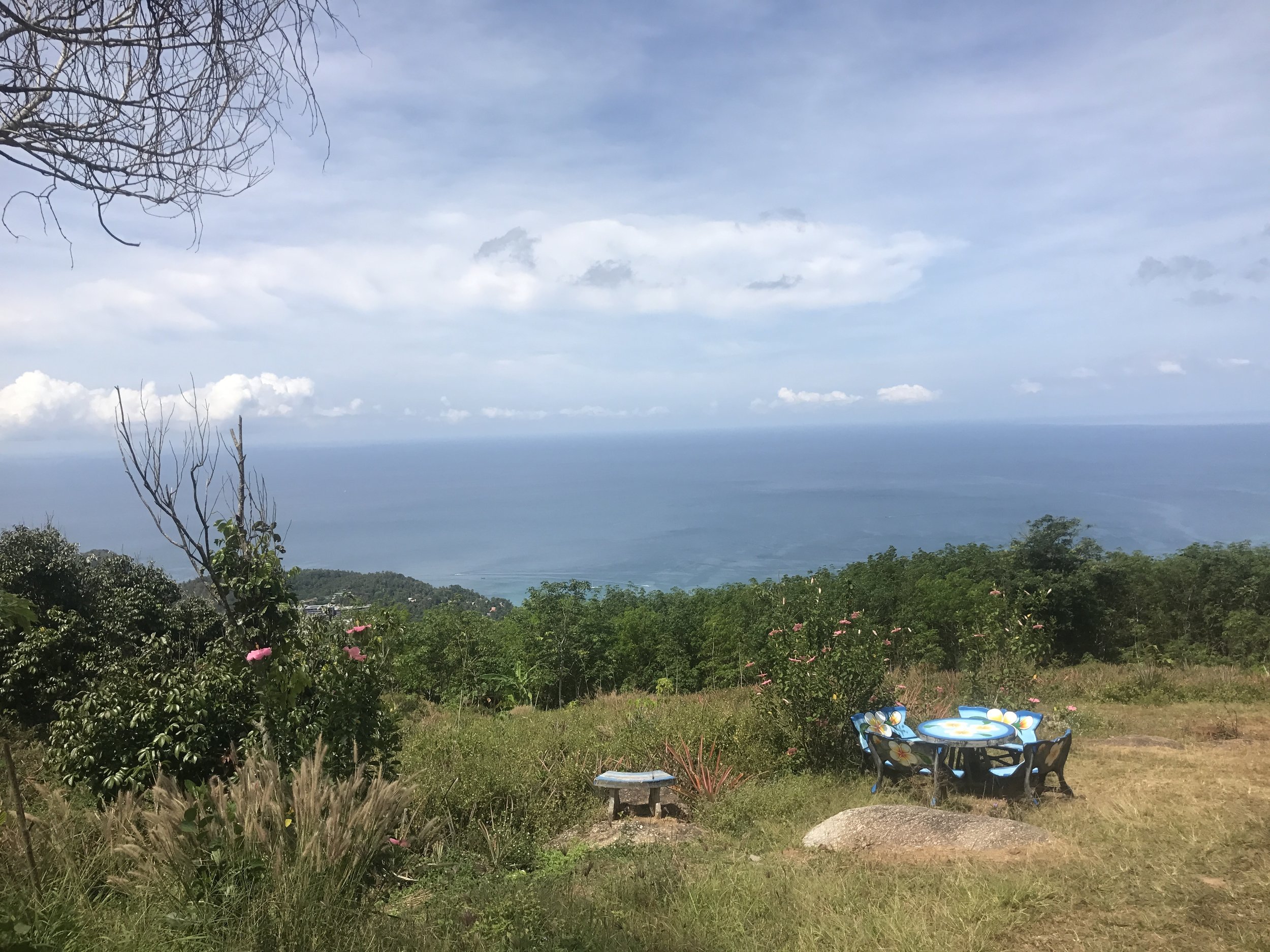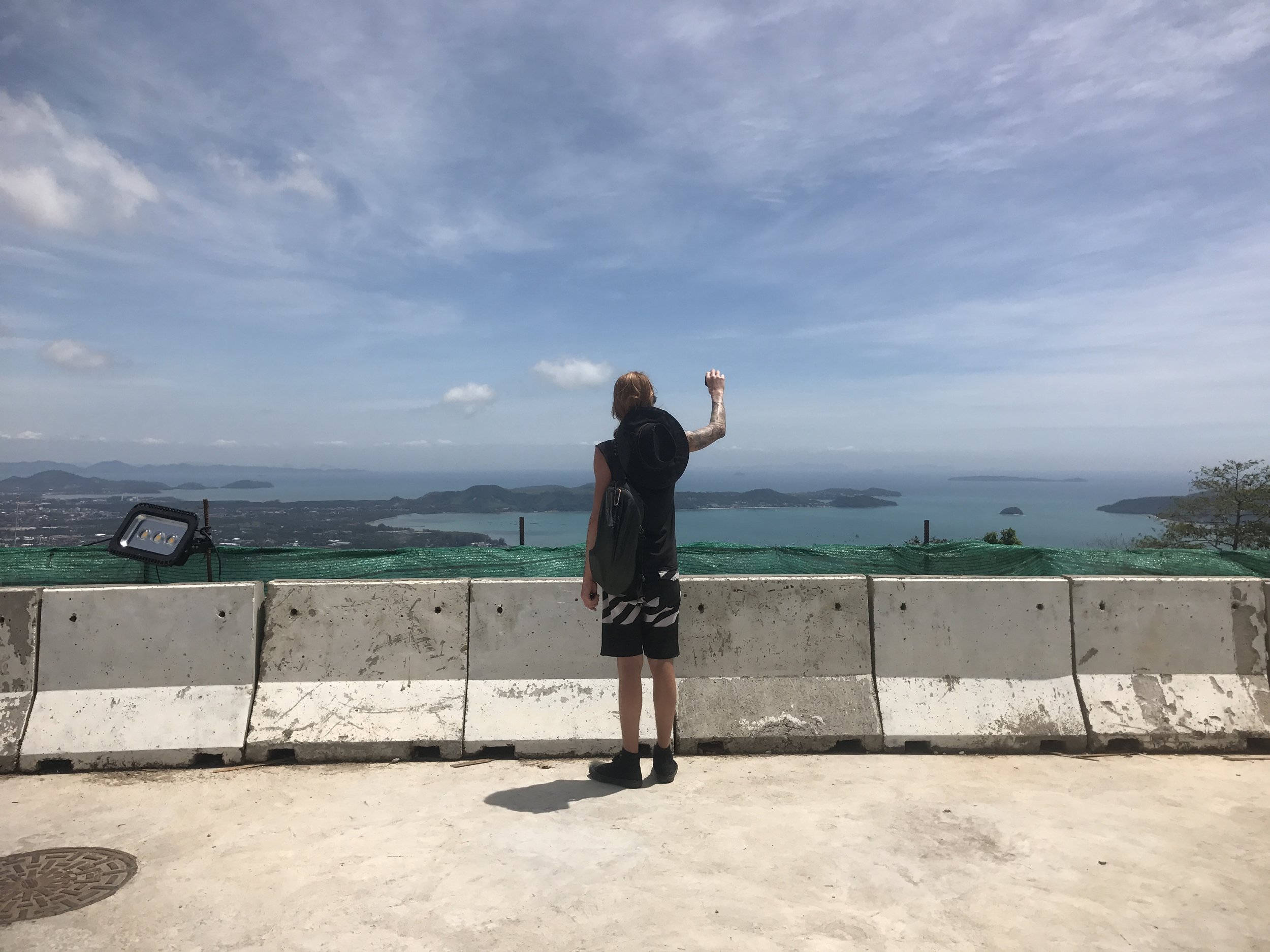A tourist riding an elephant in Phuket, Thailand. Though elephants are considered domestic animals in the country, they must endure a brutal crushing of the spirit in order to serve man.
Wildlife tourism is a booming international business born out of the human desire to engage with exotic animals. Inextricably linked with the illegal wildlife trade – a black market with an annual estimated worth of $7 – $23 billion that puts 7,000 species at risk – the tourism industry has a dark side that has long been hidden from the public.
During our travels in South East Asia we had a number of unforgettable experiences with wildlife, as well as the chance to observe good and bad practices across the region. National Geographic’s recent exposé on the topic is a deep dive into this shadowy industry, and is essential reading for anyone passionate about travel, animal rights, and conservation. Below is an account of some of our experiences with wildlife tourism, our recommendations on where to go and what to avoid.
Interacting with captive elephants is very easy in South East Asia where thousands work in tourism, and where opportunities to ride elephants are widely available. We took the above photo while hiking to Big Buddha Phuket on a very hot day in Thailand. The hike took us through a jungle path along a cliff overlooking the Andaman Sea and past an elephant trekking camp on a busy road. The photo pretty much captures how elephant tourism works.
It’s easy to see that the tourist on the elephant appears overjoyed. Riding an elephant is probably a life long dream of hers because she likely has no idea of the cruel breaking of the spirit, known as phajaan, or the crush, that all elephants must endure in order to be obedient enough to give rides and perform tricks. Phajaan is a torturous event over days or weeks that usually occurs when an elephant is a baby or juvenile. The babes are separated from their mothers and beaten until they have lost the will to resist the elephant trainer, called the mahout.
The mahout sitting on the elephant’s neck in the photo uses his feet to guide the elephant by tapping her forehead with his right heel and steering her movements with his left foot on her ear. The bull hook in his hand, the tool most commonly used to control and discipline elephants, looms ominously above her head. A pink scar rings her back left ankle, likely the result of prolonged restraint. These are the things we can see.
What’s not visible in the photo are the concrete slabs connected to thick chains that line the edge of the cliff where we assumed the elephants rest at night, or the shacks in the jungle where it’s likely the mahouts and their families live. Beyond the animal cruelty that often goes unseen in this business is the human suffering of the animal caretakers who rely on the industry for their livelihoods. In Thailand, elephants are legally classified as domestic animals like horses or cows, and elephant training, like farming or ranching, is often a family tradition. In the case of elephant ownership, a lack of upward mobility often keeps families stuck in the cycle. The mahout is not the owner of the elephant camp.
We watched the above elephant in a caravan of several pass us, including one who walked with all four legs shackled together. When we reached the main road and entrance to the camp we discovered a baby elephant pacing in a small pen and a young male attached to a chain constantly pulling on his short tether. A family with a young child paid to feed him. We were asked if we wanted to feed the baby elephant, but declined, and continued on our hike unsettled by what we had seen.
Elephants carry tourists in high heat at Angkor Wat’s Bayon Temple in Cambodia. An elephant that died of heatstroke under these conditions in 2016 sparked an international outcry, including a petition to ban elephant riding in Cambodia that was signed by tens of thousands. This photo was taken in 2017.
National Geographic’s recent article covers a wide range of animals involved in wildlife tourism, from bears to wolves, sloths, elephants, tigers and marine animals spanning countries and continents. The main take away, though, is not just an understanding of the misery often involved in wildlife tourism, but the way tourists are duped. When writing about elephant camps in Thailand the article’s authors described two camps: one that offers elephant rides, and another that calls itself a sanctuary. At the “sanctuary” the animals seem free from servitude. But it turns out both camps are owned by the same company, and those elephants at the “sanctuary” also give rides.
This story hit close to home for us. One of our favorite experiences during our time in Asia was a day of snorkeling in Thailand, which we booked on a whim through our hotel. It was only later that we discovered the same company also offered elephant rides. Had we known at the time, we would have taken our business elsewhere.
We had a similar experience in Borneo when we visited two wildlife centers operated by the Malaysian government: Semenggoh Wildlife Rehabilitation Centre, which appears to be doing great work returning orangutans to the jungle permanently, and their counterpart, Matang Wildlife Centre, which houses a menagerie of endangered and exotic animals that have been injured, orphaned, or rescued from the exotic pet trade. At Matang, most of the animals were living in cramped, small and sparse enclosures unlike their freely roaming cousins in Semenggoh.
Though Matang is not a zoo or sanctuary, not all the animals living there are releasable, causing visitors to wonder why the permanent residents are not living in better conditions. With no rangers available to answer questions, we left with the impression that Matang is under staffed, under funded, and poorly maintained, housing depressed and distressed wild animals. What we saw – pacing sun bears, an orangutan staring at the wall, rhinoceros hornbills in small confines, and a gibbon that threw poop at us – did not give us a good feeling, and it turns out other visitors shared our concerns. A slew of negative reviews on TripAdvisor have since reached the government, though it remains to be seen if any action will be taken to improve the conditions at Matang.
Orangutans at Matang Wildlife Centre in 2017.
Though not all experiences with wildlife tourism involve cages, chains, and trainers, when booking a tour out in nature you can still encounter some less than stellar guides and operators.
In Indonesia, we booked two tours around Komodo National Park that involved snorkeling with manta rays. It was surprisingly difficult to find information on most tour companies ahead of time, with many travel bloggers advising visitors to book in person. We scheduled one tour in advance with a sustainably minded company and the second on arrival, resulting in two very different snorkeling experiences.
The guides from the tour booked in person urged our group to jump into the ocean practically on top of the manta rays into a dark, swift current without any explanation of what to expect, while guides from the tour booked in advance encouraged us to calmly and gently enter the water at a distance so as not to disturb these gentle giants. Though no one was hurt with the first tour group, we felt that the experience could have been dangerous for us and the mantas.
So how can you avoid supporting unsavory organizations when seeing wildlife?
Research is your best bet. Visit the company websites and look at reviews on sites like TripAdvisor before booking. Reading blogs about others’ experiences can also be helpful. Though this will usually do the trick, it’s not always possible to know what a wildlife center, park or tour will be like until you get there. If something seems amiss, ask employees, and share your experience with others. Generally speaking, if an animal is performing i.e. being made to pose for photos, be constantly handled, do tricks, or give rides, it’s probably not a good situation. If you are able to interact with wildlife, it’s important that any contact is on the animal’s terms.
Arctic wolf, Sugar, relaxing at Wild Spirit Wolf Sanctuary in New Mexico.
Thankfully, there are plenty of sanctuaries, national parks, and reserves that offer opportunities to engage with wild animals ethically. Here are our recommendations on where to visit based on our experiences:
Elephant Nature Park, Chiang Mai, Thailand – This sanctuary for elephants rescued from logging and tourism is truly fantastic. They have several projects around Thailand and neighboring countries allowing tourists to interact with retired elephants humanely. A number of tours and volunteer opportunities are offered. We volunteered on site for a week.
Semenggoh Wildlife Rehabilitation Centre, Kuching, Borneo – The orangutans at Semenggoh have been rehabilitated and released back into the wild after being injured, orphaned, or rescued from lives as pets. The center is open twice a day for visitors to observe orangutans during feeding times, though seeing them is not guaranteed. Visitors have no contact with the orangutans.
Komodo National Park with Flores XP Adventure, Indonesia – Flores XP Adventure is an eco tourism company offering tours around Komodo National Park. On our single day tour, we saw komodo dragons, dolphins, tropical fish, manta rays, reef sharks, and flying foxes in the wild. Tourists have no contact with the animals.
Wild Spirit Wolf Sanctuary, Ramah, New Mexico – WSWS rescues wolves and other wild canines from the exotic pet trade, providing lifetime sanctuary. Like ENP, visitors can choose from a number of tours and volunteer opportunities. We worked at WSWS for two years and definitely recommend a visit.
Wolf Haven International, Tenino, Washington – Wolf Haven also rescues and provides lifetime sanctuary for displaced wolves and wolf-dogs. They are accredited by the Global Federation of Animal Sanctuaries and the American Sanctuary Association. Guided tours with no animal contact are available by appointment.
Sacred Monkey Forest Sanctuary, Ubud, Bali – The Monkey Forest Sanctuary is home to over 600 long-tailed macaques on 30 acres of protected jungle within the city of Ubud. The monkeys are wild, but not shy. Although it is possible to touch them, it’s not recommended.
Bako National Park, Borneo, Malaysia – During our visit to this protected peninsula, we saw bearded boars, proboscis monkeys, macaques, a pit viper, and many other animals along the trails and beach. There is no interaction with the wild animals at Bako.
Ultimately, wildlife tourism exists because people love animals, but if we remain shielded from the reality of the industry, elephant riding, tiger cuddles, exotic animal performance, and ownership will continue. As awareness of the unethical practices involved in most animal attractions spreads, the industry will have to change, benefitting humans, animals and ecosystems alike.
*Interested in more ways to help? Thailand is planning to allow Asian elephants, an endangered species, to be exported from the country beginning June 23, 2019 for the purposes of research, study, good relations, and parts or products for academic research or as antiques/art objects. Asian elephants are a keystone species making them critical to their ecosystems, and with only about 1,000 left in the wild in Thailand, this new law, which would lift a ban on elephant exportation that has been in place for the last decade, is likely to compromise the Asian elephant’s future in Thailand and beyond. You can help by signing and sharing this petition to stop Thailand from exporting elephants.
A happy herd at Elephant Nature Park in Chiang Mai, Thailand.























